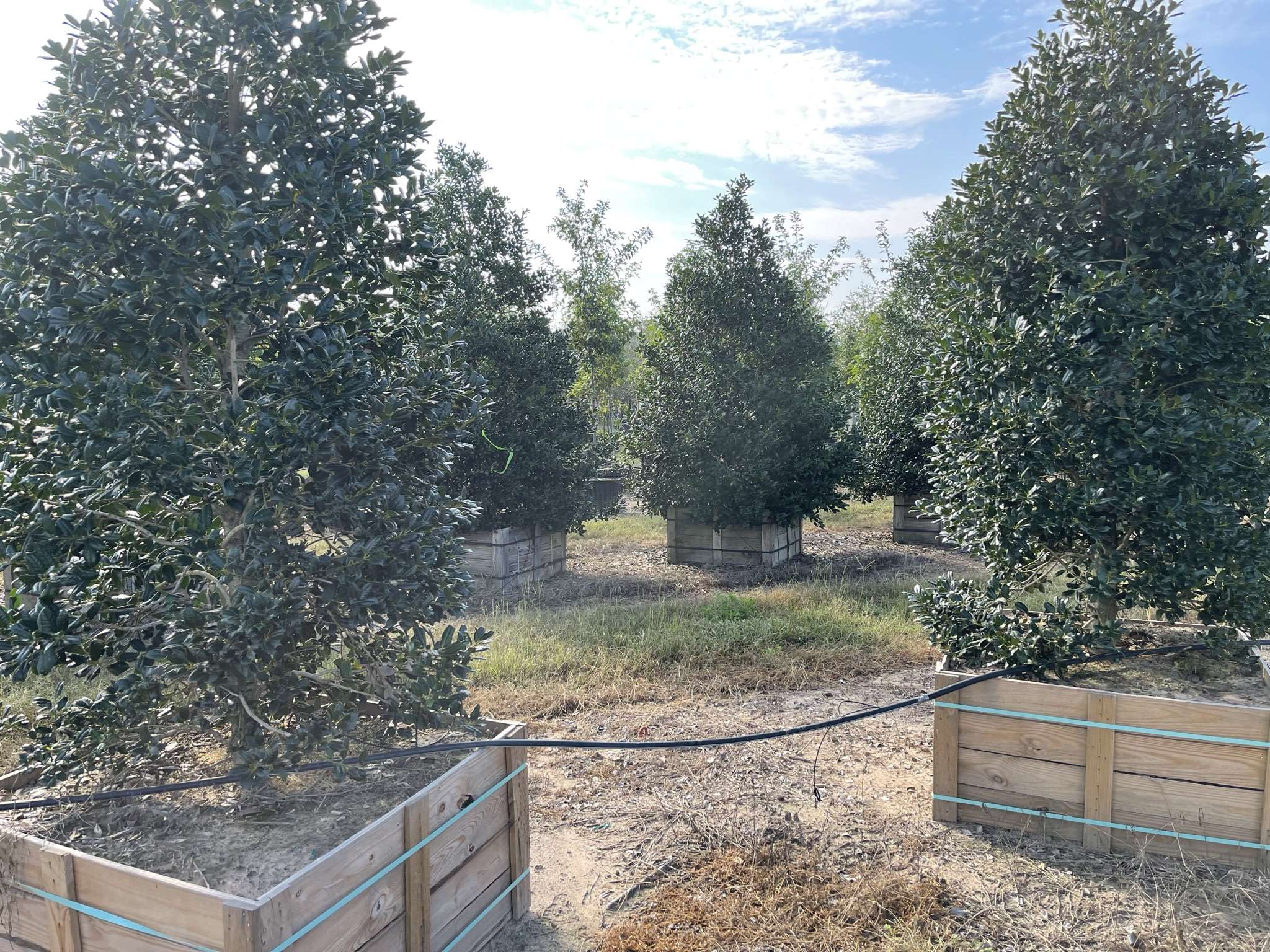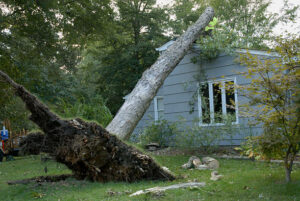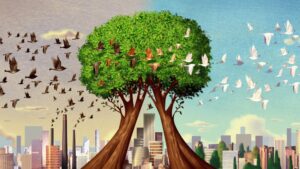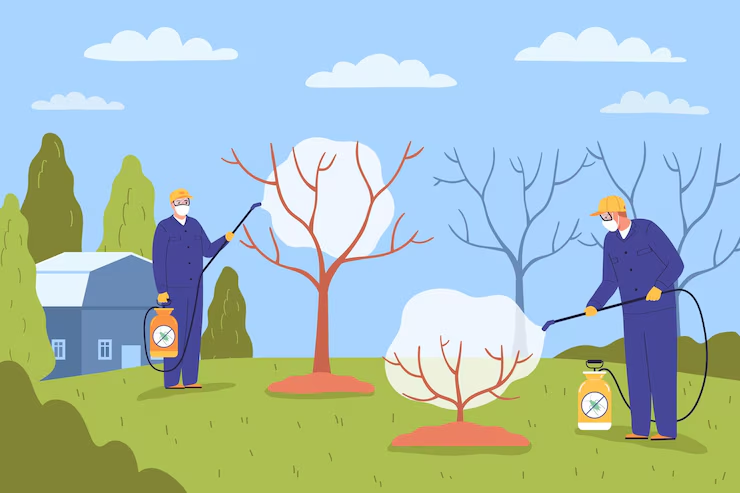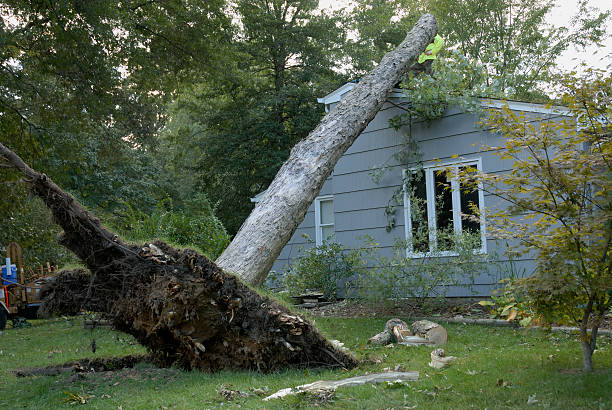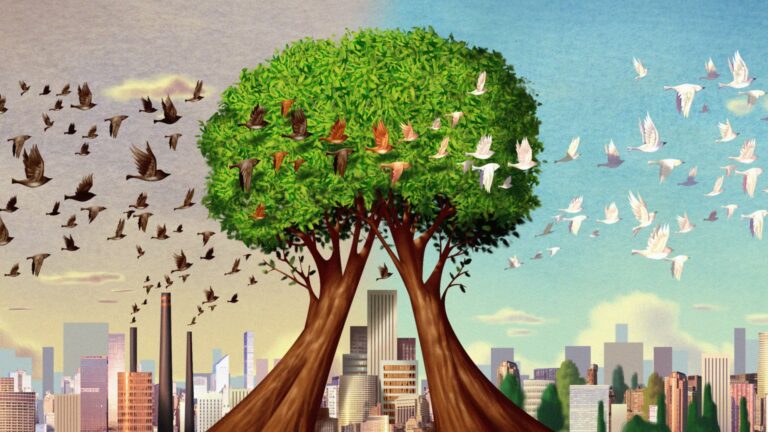What role do native trees play in improving air quality and reducing urban heat?
Ever wonder why it feels cooler in a shaded park than on a street? Why your breathing gets a little easier surrounded by big old trees? Let’s break it down — plain talk, no fluff. Here’s what native trees do for our air and our urban heat problems.
Native Trees and Air Quality — Why It Matters
Native trees are like air filters. And they do it 24/7. Here’s how:
- They suck in pollutants. Stuff like ozone (O₃), nitrogen oxides (NOₓ), sulfur dioxide (SO₂), carbon monoxide (CO), and VOCs from cars and factories? Trees grab them through tiny pores on their leaves.
- They trap fine particles. Ever heard of PM10 or PM2.5? Tiny particles that mess with your lungs and heart. Leaves catch those too.
- They store carbon. Trees absorb carbon dioxide (CO₂) during photosynthesis and lock it in their wood. One mature tree can absorb up to 48 pounds of CO₂ a year. That’s like taking a car off the road for 100 miles.
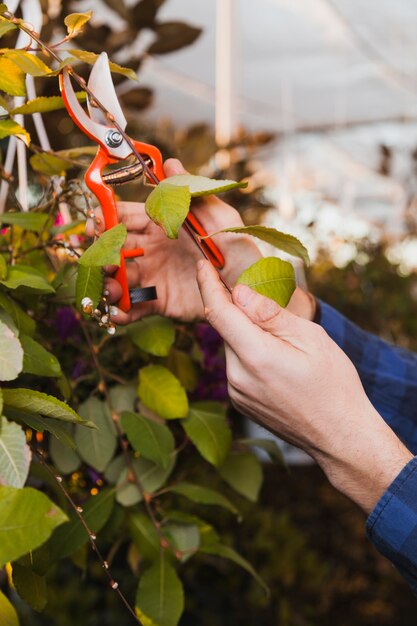
Think about it — a row of Live Oaks in your neighborhood? That’s your free air purifier.
Reducing Urban Heat — The Trees’ Secret Superpower
If you live in the Dallas-Fort Worth area, you know summers are no joke. Concrete and asphalt soak up the sun and bounce it right back at you.
Native trees help by:
- Throwing shade. Live Oak and Cedar Elm can drop temperatures by up to 20°F on sidewalks and streets. That’s less sweat and lower electric bills.
- Releasing moisture. Trees sweat too! Evapotranspiration cools the surrounding air.
- Creating cooler microclimates. Walk down a tree-lined street vs. an empty one? You’ll feel the difference.
Water Management — Another Win
Native trees do more than just cool and clean the air.
- They stop flooding. Deep roots absorb rainwater.
- They prevent soil erosion. Less mess after storms.
- They filter water. Cleaner water running into local rivers and lakes.
Supporting Wildlife
It’s not just about people. Native trees like Texas Redbud, Cedar Elm, and Live Oak are homes for birds, bees, butterflies, and other critters.
- Birds nest in branches.
- Bees and butterflies feed on blooms.
- Squirrels and small mammals call them home.
This keeps the whole chain working. No bugs = fewer birds. Less pollination = fewer plants.
Adapted to Texas Tough
- They handle heat.
- They survive drought.
- They don’t need crazy care.
- They outlive non-native species that struggle in Texas summers.
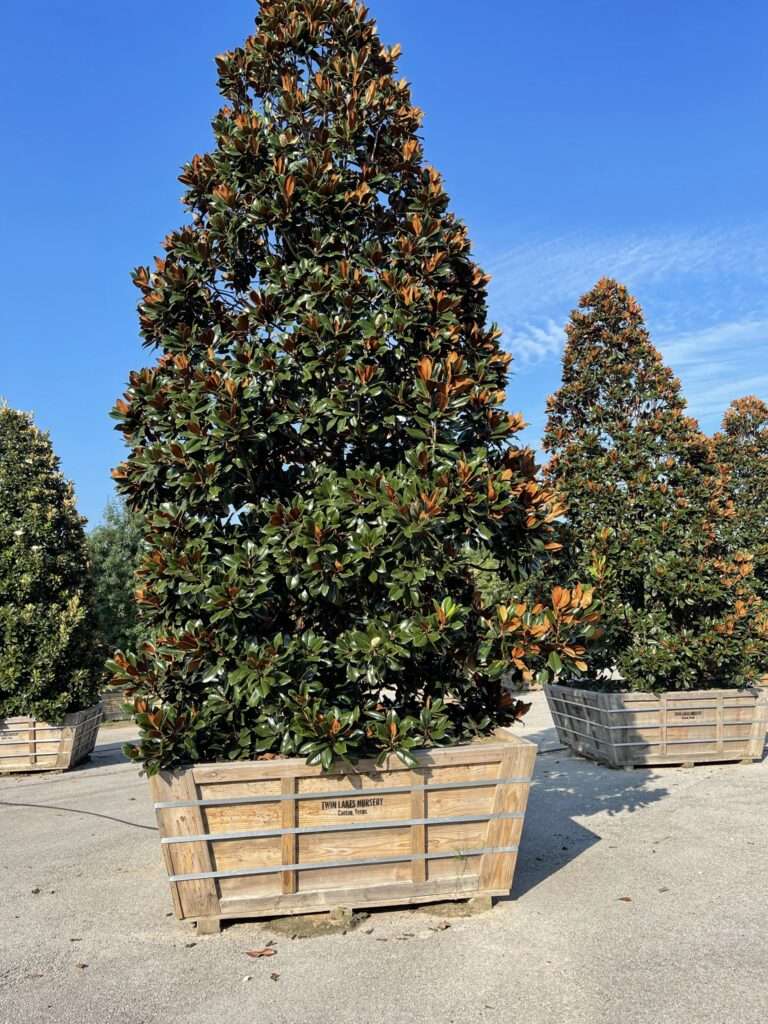
Economic Perks
- Lower energy costs. More shade, less A/C.
- Higher property values. A yard with big healthy trees? That’s money.
- Attracts customers for businesses. Cooler sidewalks = more foot traffic.
Real Talk: What Trees Should You Plant?
- Live Oak — Big shade, long life.
- Texas Redbud — Beautiful blooms, attracts pollinators.
- Cedar Elm — Drought-tolerant, perfect for Dallas summers.
Want a full list? Check out Arbor Day Foundation Tree Guide.
Internal resources if you need help:
- Tree removal in Arlington
- Tree removal in Keller
- Tree removal in Fort Worth
- Tree removal in Dallas
- Emergency tree services
- Stump grinding
- Tree cutting services
- Tree trimming and pruning
- About Trophy Tree Co.
- Contact Us
 FAQs
FAQs
Q: What are the best native trees for air quality in Texas?
A: Live Oak, Texas Redbud, and Cedar Elm top the list.
Q: Can trees really reduce my cooling bills?
A: Absolutely. Shade can drop surrounding temperatures by up to 20°F.
Q: Do trees need a lot of water?
A: Native trees are built for Texas. They need less water and survive dry spells.
Q: Why should I choose native trees over exotic ones?
A: They’re tough, need less care, and help local wildlife.
Q: Do trees clean the air or just make it smell nice?
A: They clean the air by absorbing pollutants and trapping particles.
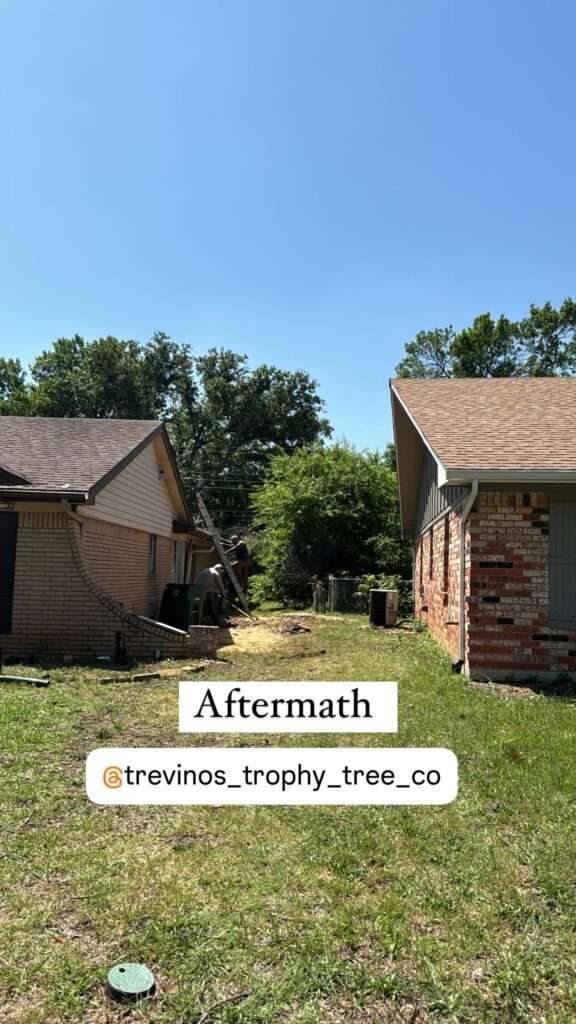
Quick Wins Checklist
- Plant native trees.
- Mulch around trunks.
- Water young trees for the first couple of years.
- Trim and prune regularly.
- Replace dead trees quickly.
- Don’t over-fertilize.
- Pick species that fit your yard and needs.
What Role Do Native Trees Play in Improving Air Quality and Reducing Urban Heat?
As cities continue to expand and urban landscapes become more developed, the importance of native trees has never been more critical. Native trees are nature’s solution to some of the most pressing environmental challenges in urban areas — particularly air pollution and the urban heat island effect. Let’s explore how native trees help create healthier, cooler, and more livable cities:
1. Native Trees: Nature’s Air Filters
Native trees are exceptionally effective in improving air quality. Their leaves act as filters, capturing dust, soot, smoke, and harmful particulate matter from the atmosphere. The larger and denser the canopy, the more pollutants they can absorb. Additionally, trees remove ground-level ozone, nitrogen oxides, and carbon monoxide — common pollutants found in urban environments due to vehicle emissions and industrial activities.
The beauty of native trees lies in their adaptation to local climates and conditions. In Fort Worth, species like Southern Live Oak, Texas Red Oak, American Elm, and Pecan are not only iconic but highly efficient at purifying air. Studies by the USDA Forest Service show that trees in urban areas can remove hundreds of tons of pollutants annually, contributing to fewer respiratory problems and better overall community health.
2. Reducing the Urban Heat Island Effect
Urban heat islands are areas where cities experience significantly higher temperatures than surrounding rural areas. This phenomenon is caused by heat-absorbing materials like asphalt, concrete, and metal structures, which store heat and release it slowly throughout the night.
Native trees offer an affordable and natural solution. Their canopies provide critical shade for buildings, roads, and sidewalks, dramatically reducing surface temperatures. More importantly, through the process of transpiration — where trees release water vapor from their leaves — they cool the air around them, similar to nature’s own air conditioner.
According to the EPA, urban neighborhoods with mature tree coverage can experience air temperatures up to 10°F lower than neighborhoods without trees. Planting native species ensures the trees will thrive for generations, offering consistent cooling benefits with minimal maintenance.
3. Lowering Energy Costs
In addition to cooling the air, native trees help property owners save on energy costs. Strategically placed trees can shade homes and commercial buildings, reducing the need for air conditioning in the summer. During the winter, certain native evergreen trees act as windbreaks, reducing heating costs. It’s estimated that a single mature tree can save homeowners between 2% and 10% on their energy bills annually.
4. Supporting Urban Wildlife and Biodiversity
Healthy native trees attract birds, insects, and pollinators that maintain the natural balance of ecosystems. Many urban pests are naturally controlled by the wildlife native trees attract. Biodiversity also contributes to soil health, water retention, and the prevention of erosion, all of which play indirect but crucial roles in air quality and urban cooling.
5. Resilience and Longevity
Unlike non-native species that often struggle to adapt, native trees are naturally equipped to thrive in local climates. They require less water, fewer fertilizers, and minimal pesticide use — reducing chemical runoff and promoting healthier urban ecosystems. Their deep root systems also help stabilize the soil and prevent flooding, a growing concern in many urban areas.
6. Health and Well-being Benefits
The benefits of native trees go beyond environmental impact. Research consistently shows that neighborhoods with abundant tree cover report lower stress levels, improved mood, and reduced mental fatigue. Clean air and cooler temperatures also reduce hospital visits from heat-related illnesses and respiratory problems. In short, planting native trees is an investment in both public and personal health.
7. A Smart Step Toward Climate Change Mitigation
Trees play an important role in combating climate change by sequestering carbon. Native trees, in particular, have adapted to store carbon efficiently while supporting the broader ecosystem. Urban reforestation with native species not only helps reduce carbon dioxide in the atmosphere but also makes cities more resilient to extreme weather events.
Conclusion: The Powerful Role of Native Trees in Sustainable Urban Living
Native trees are not just part of the landscape — they are silent protectors of the environment and public health. They clean the air we breathe, cool the streets we walk on, and provide habitat for wildlife, all while contributing to climate resilience. By planting native species, communities can combat urban heat, reduce pollution, improve biodiversity, and create more livable cities.
At Trophy Tree Co., we are committed to helping Fort Worth homeowners, businesses, and municipalities choose, plant, and maintain native trees that make a difference. Whether you’re looking to enhance your property’s beauty, reduce energy costs, or contribute to a healthier planet, native trees are the answer.
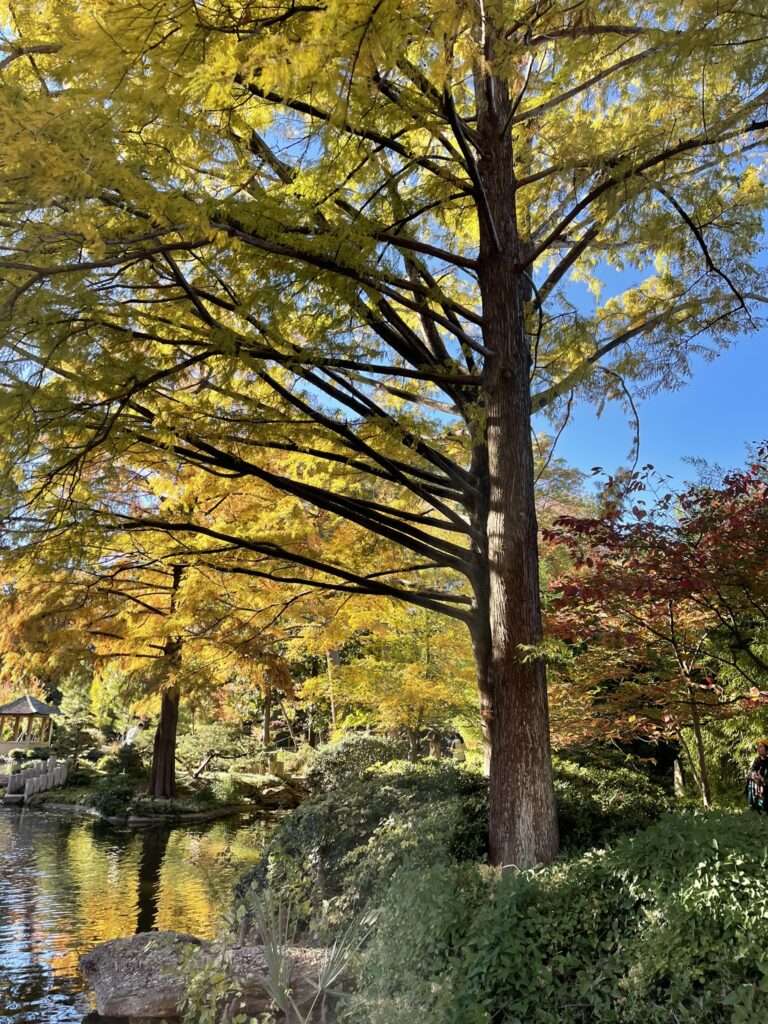
Call-to-Action:
Ready to make your property cooler and healthier with native trees?
Contact Trophy Tree Co. today for expert consultation and tree care services!
📞 Call us at (817) 378-6730 or visit www.trophytreeco.com
Still wondering how this helps you?
If your street’s hotter than it should be or if your air feels heavy — start planting.
Native trees are air filters, cooling machines, flood protectors, and property boosters.
Need help planting or maintaining your native trees? Contact Trophy Tree Co. today!
Native trees and air quality improvement are not just a nice idea. It’s how we fight the heat, breathe cleaner air, and make our cities liveable.

